The Umbrella Academy season 3 is set to launch on Netflix later this year – and it seems that we won't be prepared for the amount of heartbreak that it'll contain.
Posting a new storyboard image on his Instagram account on January 12, showrunner Steve Blackman whipped fans into a frenzy about what's actually going to go down in The Umbrella Academy season 3 . And, given that the image shows Allison Hargreeves, one of the group's superpowered beings, crying and looking forlorn, it seems that the hit Netflix show 's next entry could be very emotional indeed.
Check out the image, which was produced by the series' storyboard artist Nimit Malavia, below:
Of course, it's hard to determine who or what has upset Allison in this particular scene. But The Umbrella Academy fans are clearly concerned, with many of the replies to Blackman's post reading along the lines of "Noooo Allison" and "This must have something to do with Claire" – that is, Claire being Allison's estranged daughter.
With The Umbrella Academy season 3 launching on Netflix this year, marketing has started to ramp up on Netflix's most popular superhero/fantasy TV series. At the beginning of the year, character posters for The Sparrow Academy – a superhero group with seemingly similar powers to the Hargreeves siblings, but who exist in a different universe – were posted online.
The one sheets don't give too much information away about these mysterious characters, but we suspect that they'll be competing with The Umbrella Academy for the attention of their father – aka Sir Reginald Hargreeves.
Hopefully, it won't be too long before we find out why Allison is so upset in the show's most recent piece of concept art. The Umbrella Academy season 3 doesn't have an official release date yet. But, with the series' marketing campaign slowly starting to tease what's to come, we're confident that a teaser trailer and launch date aren't too far away.
For more Netflix-based content, check out our best Netflix movies and best Netflix documentaries lists. Or, to learn more about other popular and upcoming Netflix fantasy series, read our Stranger Things 4 and Sweet Tooth season 2 hubs.
Analysis: is The Umbrella Academy season 3's release date announcement coming soon?

It's hard to say. We know it's coming in 2022 and, with the release of The Sparrow Academy posters and this storyboard image from Blackman, fans may think a release date announcement will be here sooner rather than later.
But we don't expect The Umbrella Academy season 3's launch date or a teaser trailer to arrive any time soon. Netflix is notorious for closely guarding the release dates for any of its movies and TV shows – so much so that the streaming giant usually drops them online without teasing their arrival ahead of time.
A perfect example of this marketing strategy is Ozark season 4 , which launches on Netflix on January 21, but only received its first teaser in mid-December. An official Ozark season 4 trailer didn't land online until January 7, too, providing further proof that Netflix likes to keep audiences waiting (and speculating) about when their favorite shows will return.
So The Umbrella Academy season 3 is sure to be treated in the same way. We hope that an official release date and teaser trailer are released soon, but we're not holding our breath. For now, we'll have to take whatever small teases or news falls into our laps, and pray to the 'brelly' gods that we finally catch a glimpse of the show's third season in the near future.
Huawei P50: here's everything we know so far
The Huawei P50 and P50 Pro were both officially unveiled in July 2021, which was already late compared to when we expected, but as of October they still haven't been put on sale for global buyers.
At the moment, you can only buy the phones in China and Malaysia. But Huawei has now confirmed it'll be bringing its smartphones to other countries, with some parts of Europe being next in line, but it remains unclear if and when key regions like the UK and Australia will get them.
It's possible the ongoing global chipset shortage is to blame, and we've heard the Huawei Mate 50 series could be delayed or canceled as a result too.
The Huawei P50 and P50 Pro are the 2021 entries into the company's long-running line of photography-focused smartphones, with top specs across the board but particularly in the camera department. You can find out everything there is to know about the devices below.
Cut to the chase
Huawei P50 series release date and price
Huawei has now unveiled European pricing for the Huawei P50 Pro and the Huawei P50 Pocket (a foldable phone), with the P50 Pro starting at €1199 (around $1,350 / £1,000 / AU$1,890), while the P50 Pocket starts at €1299 (roughly $1,465 / £1,085 / AU$2,045).
There's also a Huawei P50 Pocket Premium Edition (made in collaboration with haute couture designer Iris van Herpen), which costs €1599 (approximately $1,800 / £1,335 / AU$2,520).
Given that we have European pricing for these phones there's a good chance that they will come to the UK, but that's not yet been confirmed, which means a release date there also hasn't. There's also no word on an Australian release, and a US launch is unlikely.
There's no mention of the standard Huawei P50 here either, which might mean that doesn't get a wide launch.
Prior to the European prices being revealed though, the Huawei P50 and P50 Pro prices had also been confirmed for China, and in more detail than Europe, as there are a few different price points for different storage sizes. Firstly, let's look at the standard Huawei P50 prices, as well as conversions in different regions (these won't necessarily be the on-sale prices in those regions).
| RAM / Storage | China price | US conversion | UK conversion | AU conversion |
| 8GB / 128GB | CNY4,488 | $700 | £500 | $940 |
| 8GB / 256GB | CNY4,988 | $770 | £550 | $1,040 |
So that's a fairly typical mid-range price in most regions, though we don't expect the conversions will prove fully accurate if or when the device lands in markets outside China.
Now on to the Huawei P50 Pro price.
| RAM / Storage | China price | US conversion | UK conversion | AU conversion |
| 8GB / 128GB | CNY5,988 | $930 | £660 | $1,250 |
| 8GB / 256GB | CNY6,588 | $1,020 | £730 | $1,380 |
| 8GB / 512GB | CNY7,488 | $1,160 | £830 | $1,570 |
| 12GB / 512GB | CNY7,988 | $1,240 | £890 | $1,670 |
Those conversions suggest some pretty high prices for the Huawei P50 Pro, especially the 12GB RAM version.
The Huawei P50 Pro release date was August 12, 2021 in China. We expected a global launch for both the Pro and the Pro Plus at some point in August or September, but it was instead delayed until early 2022.
Design and display
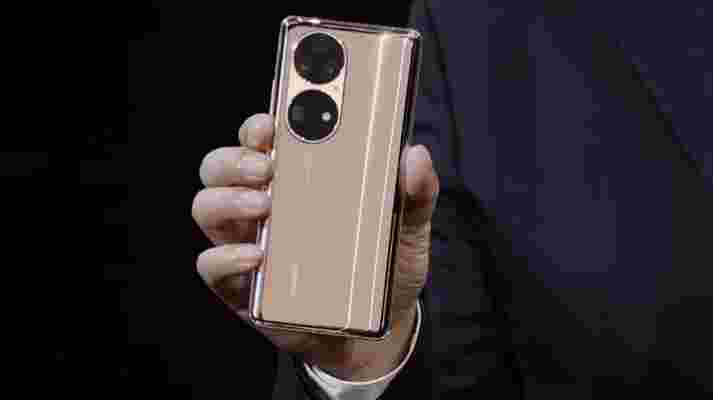
The Huawei P50 has a flat-edge OLED screen that's 6.5 inches diagonally, and broken up by a central cutout for the front camera on the top edge. The resolution is 1228 x 2700, while the refresh rate is 90Hz and the touch input is 300Hz.
The Huawei P50 Pro has mostly the same display specs, but it's slightly bigger at 6.6 inches, and has a 120Hz refresh rate. Unlike the 'vanilla' phone, its screen curves at the edges.
The phones look pretty similar (other than the display) with the rear cameras housed in two large circles on the back. The devices have USB-C ports, but no 3.5mm headphone jacks.
Huawei made a point of stating that the devices are IP68 resistant against dust and water, and also that they're both fairly lightweight, with the standard model weighing 181g and the Pro 195g – that's a fair bit less than your average iPhone, for example.
Cameras and battery life
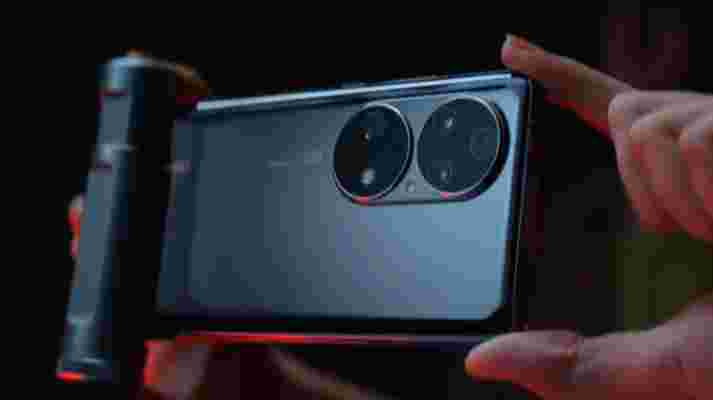
Now onto the department Huawei phones are known for: their cameras. The standard P50 has three rear shooters, with a 50MP main, 12MP periscope zoom and 12MP ultra-wide snapper. That's a fair complement of cameras, with the periscope module supporting 5x optical zoom.
The P50 Pro has 64MP telephoto , 50MP main, 40MP monochrome and 13MP ultra-wide cameras – that's a series of very high-res snappers, with the periscope one apparently facilitating a head-scratching 200x digital zoom (as well as 3.5x optical).
The front-facing camera on both those phones is 13MP, so a little low-res compared to the other snappers, but more than you'll need for selfies.
The Huawei P50 has a 4,100mAh battery, while if you opt for the Pro you're getting a slightly bigger 4,360mAh power pack. Both of those figures seem quite modest for a flagship phone, so we hope there are some smart software optimizations to keep the devices ticking over for a decent length of time.
There's 66W wired charging for both handsets, which is pretty fast for a smartphone, though about the same as for other flagships on the market. The Pro also has 50W wireless charging.
Performance and software
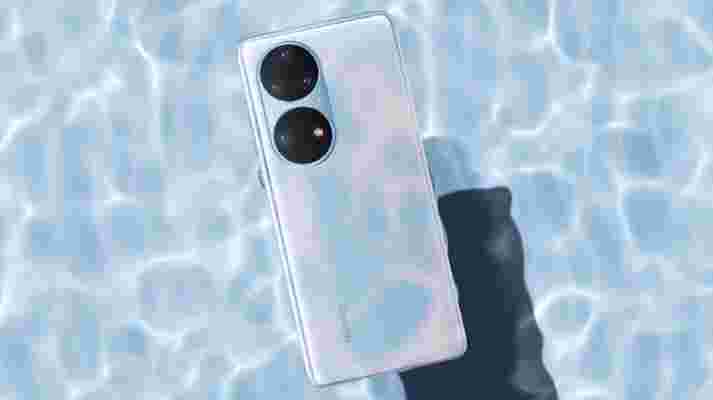
All new Huawei P50 phones run HarmonyOS 2, the company's Android rival that it unveiled earlier in the year. Admittedly the software doesn't feel a million miles from Android, but it brings a few changes.
Firstly, Huawei's AppStore has a fairly limited number of apps on it, although you can work around this by using Petal Search, a way of installing other apps you want from the web.
HarmonyOS was designed to work well in collaboration with other Huawei devices, so if you have a tablet or smartwatch from the company you should be able to make the most of it.
So what about the chipset? In the Huawei P50 it's the Snapdragon 888, the top-end processor available to Android phones – but with one change. It's a 4G version, so neither the Huawei P50 or P50 Pro let you connect to 5G networks.
A spokesperson for Huawei told TechRadar, "For reasons that are known to everyone, Huawei is left with no option but launch 4G variants for Huawei P50 Series."
The best TVs from CES 2022: 8 cutting-edge TVs to keep an eye on this year
CES 2022 has been an odd year for the international technology convention – it’s in-person, but from the photos, few people are there. Similarly, TVs have been announced, but you won’t find them anywhere on the show floor or in any of the keynotes.
Still, neither of those issues have stopped the major manufacturers from going all-in on TV technology at CES 2022 – they just did it in an unconventional way by showing it ahead of time to select journalists.
While we’ve yet to see every TV on this list in-person, we’ve taken briefings with each of the manufacturers and were able to ask questions about their specs, their features, their performance and, ultimately, what will give them the edge to become the best TVs of 2022.
Below you’ll find our top picks from those interviews and our top prospects from the show.
The best TVs of CES 2022
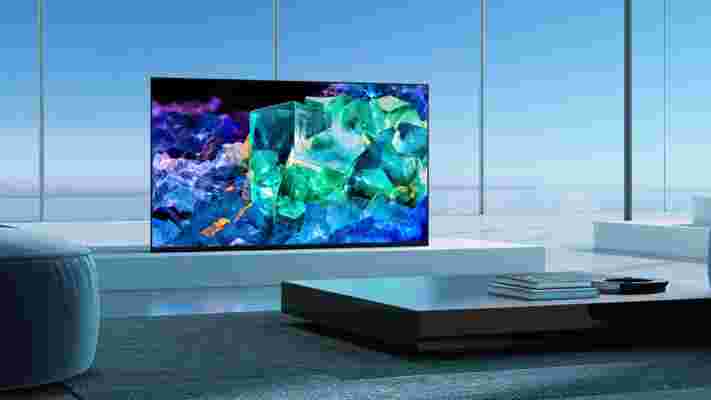
1. Sony A95K QD-OLED (XR-65A95K Master Series TV)
As far as we’re concerned, Sony unveiled one of the only truly next-generation TVs at CES in the form of the A95K QD-OLED TV. It’s the first QD-OLED unveiled by a major manufacturer, and according to the specs we saw, it will deliver everything we had wanted from the latest and greatest panel technology.
QD-OLED, for those who are just hearing about it, combines the self-emissive organic light-emitting diodes that give OLED its perfect black levels with the color saturation of quantum dots. The result is a screen that has 200% of the color saturation of a traditional LED-LCD screen, with higher peak brightness and wider viewing angles than an OLED.
We’ll still need to test it in our own homes before we can shower it with accolades, but based on everything we know about the A95K, it’s the evolution of OLED we’ve been waiting for.
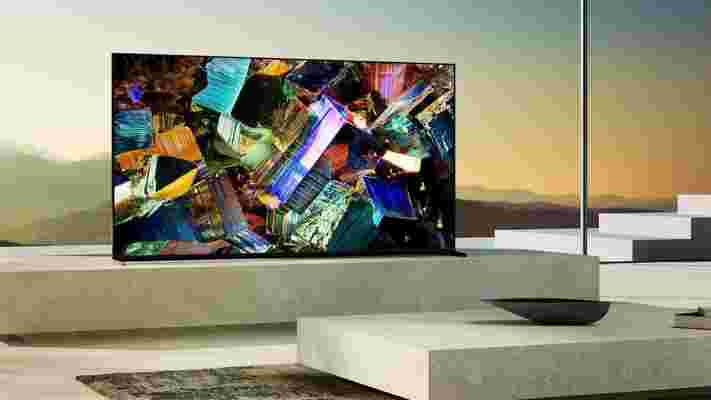
2. Sony Bravia Z9K Master Series 8K TV with mini-LED (XR-85Z9K)
There was no shortage of mini-LED screens announced at CES 2022 this year. Samsung and LG announced a bevy of them, as did Hisense and TCL. Yet, of them all, we’re most excited about Sony's Z9K not simply because of its newfound mini-LED backlight or its 8K resolution, but because of the return of the incredible XR Backlight Master Drive technology.
For folks who don’t remember, the Backlight Master Drive is what made the Sony Z9D Master Series TV one of the best TVs of the decade, and now it’s coming to a mini-LED model with an absolute boatload more contrast control zones to work with.
The result, we expect, is going to be the best backlight control of any TV in 2022 coupled with the extreme brightness of an LED-LCD TV. Add to that Sony’s exceptional work in motion processing and natural color reproduction, and Samsung could have a real fight on its hands holding down the 8K TV market.

3. Samsung QN900B 8K Neo QLED TV (QN85QN900B)
While Sony is our top pick for a mini-LED at CES 2022, it’s not the only mini-LED vying for a top spot. One of the others is the new Samsung QN900B 8K Neo QLED TV, the successor to last year’s award-winning Samsung QN900A QLED TV , TechRadar’s top TV of 2021.
The big changes for this year are a new feature called Shape Adaptive Light Control that allows the TV to have better control over blooming and an upgrade to a 14-bit backlight for more luminance points. That might not sound that impressive, but considering just how bright this TV can get, having a few thousand more luminance points is going to help immensely.
Inside the TV are Samsung’s Neo Quantum Processor that has an Object Depth Enhancer feature that will better separate objects from the foreground and background and the updated New Home Screen UI that has a number of changes including… er, an NFT store for some reason. We could live without the last part, admittedly, but you can’t blame Samsung for wanting in on the flaming hot NFT market.
4. LG 42-inch 4K OLED TV (OLED42C2)
LG came out swinging for CES 2022 by announcing a number of 8K and 4K OLEDs, several new QNED mini-LED TVs and even a MicroLED TV to rival Samsung. Most of those screens will forever remain outside our budget… with the one exception being the LG 42-inch 4K OLED.
In 2022, LG is releasing its C-Series OLED in an even smaller, more affordable size. And while we had some fear that the reduction in size might mean a reduction in specs, for the most part that hasn’t been the case here. The smallest C2 OLED will still have the Alpha a9 Gen. 5 processor like its pricier siblings and support 4K/120Hz via HDMI 2.1 ports.
The only downside is that, while most of the larger C2 OLEDs will use LG’s evo OLED panels that can get a bit brighter than older OLED screens, the smallest C2 is stuck with last year’s panel. That’s not a total bummer considering the price could start at under a grand, but it has kept the desk-friendly C2 from reaching a higher spot on our list.
5. Panasonic LZ2000 OLED TV
While Pana didn’t roll out the red carpet for a QD-OLED or announce a new mini-LED model this year, it did announce a sound-focused OLED that will definitely win it some points with all the audiophiles out there.
The new Panasonic LZ2000 builds on the audio evolution of last year's model, which added side-firing speakers for a three-dimensional sound, along with Dolby Atmos support, a sound system tuned by Technics, and both front-firing and upward-firing drivers, to create an all-in-one home cinema system unmatched by other screens.
For the first time ever, Panasonic will be selling an OLED at 77 inches, which means the LZ2000 could very well be the home cinema screen you’ve been waiting for.
6. Samsung MicroLED TV
Samsung didn’t mince words when it announced the latest version of its MicroLED TV, calling it “the pinnacle of TV technology”.
Thanks to its 25 million micrometer-sized LEDs, that could very well be the case, but considering its predecessors’ exorbitant price tags, we’re not sure who’ll be able to afford one to take advantage of the technology.
In the hopes of creating something that the upper-middle class among us can afford, Samsung has announced three more manageable screen sizes for its 2022 models: 110, 101 and 89 inches. That’s not going to fit in everyone’s home, obviously, but it’s a fair bit more manageable than the monstrous 146-inch and 292-inch iterations we’ve seen previously.
7. Hisense U7H ULED TV
It might not have a mini-LED, MicroLED or OLED panel, but Hisense’s U7H has something significantly better: an affordable sticker price.
Announced in a slew of new models from Chinese TV maker Hisense, the U7H is offering a number of fantastic features like 4K/120Hz support for game consoles like the Xbox Series X and PS5, as well as a number of cutting-edge picture technologies like the IMAX enhanced format, FilmMaker Mode, Dolby Vision IQ, HDR 10 and 10+ support, FreeSync VRR and a built-in ATSC 3.0 tuner.
It’s already looking like a phenomenal value and could easily take the crown from the TCL 6-Series as one of the best TVs under $1,000 should Hisense follow a similar pricing strategy as last year’s 55-inch U7G model that’s selling for $849 in the US.
8. LG G2 OLED and Sony A90K OLED
OK, this one is a bit weird as it’s two models from two different manufacturers, but we’re going to lump them together due to both their sheer level of performance and utter lack of innovation.
While LG and Sony would argue that their next high-end OLEDs are bursting at the seams with the latest technology, the biggest innovation in both are new processors and/or upscaling algorithms. Under the hood, both use the same panels as last year, and won’t have very many new hardware-specific features.
That being said, even if they're not packed to the brim with new technology, we’re expecting these to be great TVs as their predecessors each made our list of the best TVs of 2021. Not all TVs necessarily need to be the most cutting-edge model on the market, after all, and we don’t blame Sony or LG for not fixing something that wasn’t broken.